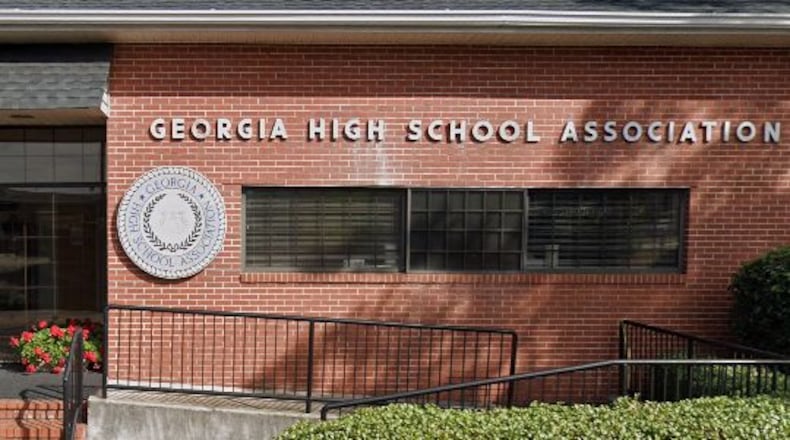GHSA executive director Robin Hines announced Wednesday that he will retire Aug. 1.
Hines shared the news at the end of an executive committee meeting in which the GHSA ratified reclassification for 2024-26 and adopted a playoff format and rankings formula for classes 3A to A Division I.
Also approved at the Thomaston meeting were four schools’ appeals to move down in classification for the 2024-26 academic years. They were Alexander and Effingham County to 5A, Eastside to 4A and Holy Innocents’ to 2A.
After the meeting, Hines told the committee that his seventh year on the job would be his last.
“My kids have been pushing for this for a couple of years,’’ Hines told the AJC. “My grandchildren are getting older. They’re involved in youth sports. I yearn to be a part of that.’’
Hines and his wife, Kim, bought a house on Lake Hartwell about a year ago, and the 3.5-hour drive from Thomaston had been keeping them apart too much, he said.
Hines’ decision reverses his plans from March, when he signed an extension through May 31, 2026. He said he would stay longer if necessary to help with the transition.
“The August 1 date is certainly soft one for me,’' Hines said. “I’m sure it would be an advantage to work side by side with the new executive director for a couple of months. I’ll do whatever the association needs me to do.”
The GHSA has had only six executive directors. The others were Sam Burke (1946-81), Bill Fordham (1982-91), Tommy Guillebeau (1992-2000), Ralph Swearngin (1991-2013) and Gary Phillips (2014-16).
The GHSA settled on a playoff and rankings formula for 3A-A that will seed teams with a model similar to the RPI rankings the NCAA sometimes uses. The plan would award preferred seeding to region champions and runners-up and give automatic playoff berths to the top four finishers in each region. Some schools will make the playoffs with at-large berths when they finish outside the top four.
Private schools in classes 3A to A need a seeding model because they will be competing in multiple classifications with public schools during the regular season, then separated into private-only state playoff brackets.
The 3A, 2A, A Division I playoffs also will use the ranking model because some of their regions contain private schools that won’t make their playoffs.
The executive committee also closed an avenue whereby private schools might reintegrate with public schools in 3A-A playoffs if the number of private-school teams in a sport dipped below 24.
Class 6A to 4A and Class A Division II will use the traditional playoff model of 32 playoff teams, four from each region, seeded based on region finish.
About the Author
The Latest
Featured


